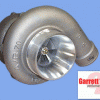turbo housing choice
Announcements
-
Similar Content
-
Latest Posts
-
That's still impossible to understand properly. "Just floor it" as in, not driving, not under load, just flooring the throttle", or "just floor it", as in "Driving under load with the throttle floored"?
-
It could be on the return. If your pressure side lines have holes in them outside the tank, you'd know about it with fuel exiting under the car everywhere.
-
Sorry I didn’t explain myself properly, by free revving I meant if I just floor it, it gets to 7kish and will start to break up/not hit limiter properly, off boost I’ve driven the car until near on empty. I have a fuel pressure gauge mounted in the engine bay, holds fuel pressure consistently full tank or half tank even when revving, and no the pump sound doesn't change. all the fuel lines inside the tank are fairly new but will look into it, could that also be an issue with the lines outside the tank ?
-
Yeah maybe I got a bad batch that only lasted 6 years. Or conversely maybe I got a good batch that managed to last 6 years. Either way I have sourced a set of OEM hub/bearing assemblies so I keep hearing! Even from life long mechanics. Apparently this failure is unheard of…
-
By Dose Pipe Sutututu · Posted
I am trying to understand how that even happened to the hub... wtf
-






Recommended Posts
Create an account or sign in to comment
You need to be a member in order to leave a comment
Create an account
Sign up for a new account in our community. It's easy!
Register a new accountSign in
Already have an account? Sign in here.
Sign In Now